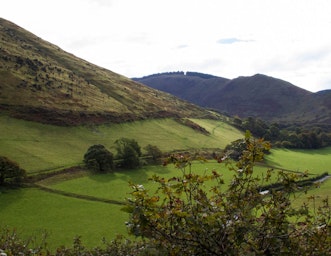
Restoring ancient peatlands – guest blog
November 12, 2020Home » Restoring ancient peatlands – guest blog
The UNESCO Dyfi Biosphere, where CAT is located, is home to a wide range of important habitats. At Cors Fochno, just a few miles from our eco centre, Natural Resources Wales and partners have an ambitious project to restore one of the great raised bogs of Wales. Project Manager Patrick Green tells us more.
Cors Fochno is one of the largest actively growing raised bogs in the lowlands of Britain, with peat up to eight metres deep in places. It is part of the Dyfi National Nature Reserve near Borth in Ceredigion, and is a key part of the UNESCO Dyfi Biosphere Reserve.
Lowland raised bog are amongst the rarest and most threatened habitats in the UK, there was over 4,000 ha of the habitat in Wales but only 1800 ha are left today.
Raised bogs get their name because of their domed shape. They are areas of peat that have built up over 12,000 years and can be as deep as 12 metres. The bog at Cors Fochno was formed around 5,500 BC when part of the estuary floodplain was covered with forest. As sea levels rose, this forest was replaced by reed swamp and then peat bog. At low tide ancient tree stumps can be seen on the beach nearby.
A look back on Cors Fochno’s history
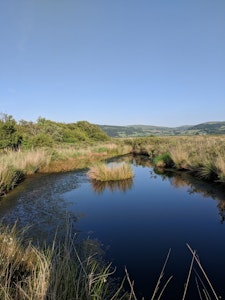
Over Cors Fochno’s 7500-year history there have been many events that have affected its growth. In wetter periods the peat will have grown at 1mm a year, but in drier ones, growth will have been slower.
The most dramatic changes have been in the last 300 years as people drained large areas of the bog for drier, more productive agricultural land around its edges or dug peat, to be used as a fuel.
The Afon Leri river that used to meander around the western side of Cors Fochno was canalised and now runs into the Dyfi estuary, rather than directly into the sea. The bog vegetation was often burnt to help with these activities, resulting in large amounts of carbon being released into the atmosphere.
From the mid-20th century, Cors Fochno began to be recognised as a rare and special habitat by visiting scientists and those from the nearby Aberystwyth University, and they expressed concern about the damaging effects of the regular fires. Thankfully, the designation of Cors Fochno as part of the Dyfi National Nature Reserve helped reduce the number of fires and there have not been any major ones since 1985.
Squelching on the bog
If you walk onto the squelchy surface of an undamaged raised bog, the most abundant plants to be seen are the wonderful sphagnum mosses. They are the habitat engineers of raised bogs and as they grow upwards their old remains decompose very slowly under the waterlogged conditions and eventually form a dark brown soil called peat.
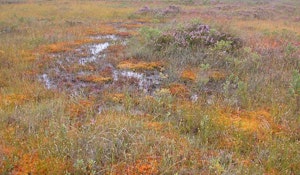
They are famous for their amazing ability to hold water due to their morphology and cell structure. They can hold more than eight times their own weight in water and are made up of almost 95% water.
However, in Wales, most of our active raised bog sites have suffered due to extensive drainage in the past and this has caused invasive plants to take over and crowd out the important plants like sphagnum mosses.
This is why Natural Resources Wales (NRW) is now running a six-year pioneering and ambitious project which aims to restore seven of the very best examples of raised bogs in Wales – the EU-funded LIFE Welsh Raised Bogs Project, with additional financial support from the Welsh Government and Snowdonia National Park Authority. Almost 4 square miles (over 900 hectares) will be restored to a better condition. This represents 50% of raised bog habitat in Wales and 5% in the UK.
There are many different species of sphagnum moss – with 16 recorded at Cors Fochno, and you can spot them in a multitude of colours including claret red, chestnut brown and golden yellow.
Each species prefers slightly different conditions, some grow in low hummocks, some high hummocks and some in lawns. One species called sphagnum cuspidatum likes to grow in pools and is often referred to as “wet kittens” as it resembles wet fur when it is removed from the water.
One of the most distinctive features in the central undamaged area of Cors Fochno is the presence of golden ‘lawns’ of the rare – but here plentiful – sphagnum pulchrum, whose name translates as ‘beautiful sphagnum’.
Restoring by innovating
We’re using some pretty innovative methods at a scale that has not been seen in Wales before. For example, we will be building over 60 km (60,000 metres) of low-level (25 cm in height) banks of peat, also known as ‘bunds’, on our sites, at a scale that has not been carried out in in any UK peatland project before.
We are also using a wetland harvester machine across a wide variety of sites and conditions. Despite its weight it will float on very wet areas and allow us to get to parts of the site never accessed before.
This mowing work has cut back invasive grasses like purple moor grass (Molina) to restore the habitat’s important plants, such as the iconic bog rosemary and the beautiful large-heath butterfly. And the work is already paying dividends as we’ve seen the return of orchids, not seen here for decades.
Cors Fochno is the main home for another rarity in Wales, the impressive insect-eating plant, the great sundew. Sundews ensnare their prey with a sticky substance on their leaf hairs. The sticky substance contains enzymes which digests the insect and enables the plant to absorb the nutrients it needs that are so lacking in this unusual habitat.
Carbon sponges and natural flood buffers
Peatlands like Cors Fochno are one of the most effective carbon sponges on Earth and in peak condition, they help tackle climate change by storing vast amounts of carbon that would otherwise be released into the atmosphere.
It can take around 1000 years to make 1m of peat, and although this is a painstakingly slow process, this capacity for long term carbon storage is essential.
But damaged peatlands have the opposite effect – they are a major contributor to greenhouse gas emissions, as the peat which stores the organic carbon is exposed to the air. Peatlands’ ability to soak up substantial volumes of water means that they also act as a natural buffer against flooding.
Working with the community
The drive to repair them will also improve drainage systems, cut invasive species, remove scrub and introduce light grazing – this all takes place in partnership with local communities, landowners and contractors.
We’re also hoping that the project promotes social and economic benefits to the community too. We’re offering volunteering opportunities so that people can improve their skills for potential jobs in similar industries, as well as gain increased confidence and self-esteem. And, of course, we’re encouraging people to visit to enjoy nature at its best.
My aim is that the benefits of this work will continue long after the project and will have a positive impact for generations to come.
Learn more about the project
To keep up to date with the LIFE Welsh Raised Bogs Project: follow on Facebook or on Twitter
About the author
Patrick Green is NRW’s Project Manager for the LIFE Welsh Raised Bogs Project and leads a team of seven staff working across Wales on lowland raised bog restoration, education and engagement work. The six year project aims to restore seven of the most important lowland raised bog sites in Wales to good condition.
- Climate Change
- Nature and Wildlife
- Autumnwatch
Related Topics
Related Pages
Related news

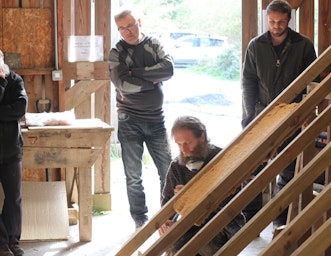
CAT stories – Nick Parsons and Mike Russell
29th January 2025
Why we teach – communicating transformational social change
13th November 2024
WHY WE TEACH – ecological restoration
11th August 2024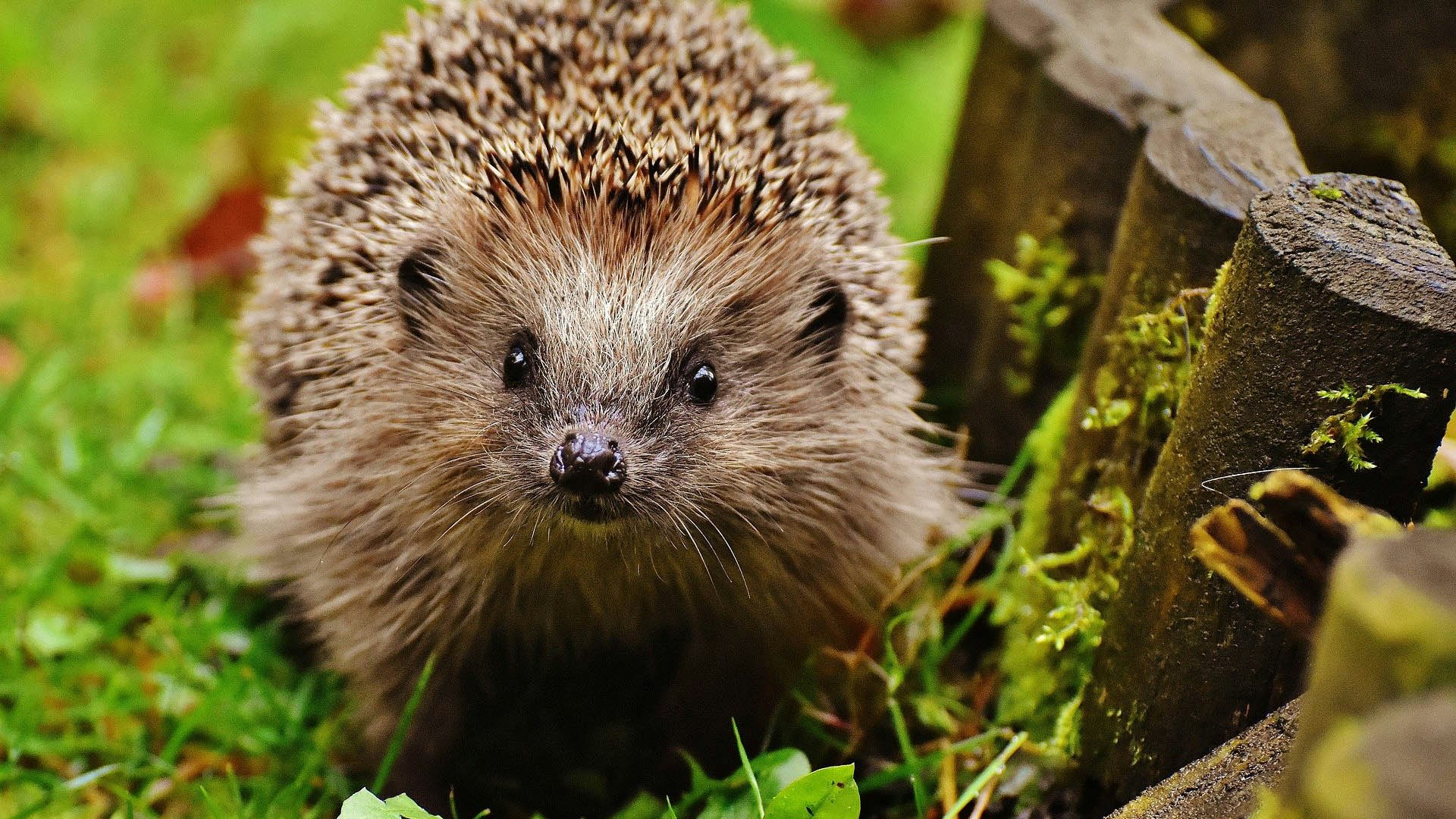
AUTUMN QUIZ
EMAIL SIGN UP
Keep up to date with all the latest activities, events and online resources by signing up to our emails and following us on social media. And if you'd like to get involved and support our work, we'd love to welcome you as a CAT member.

